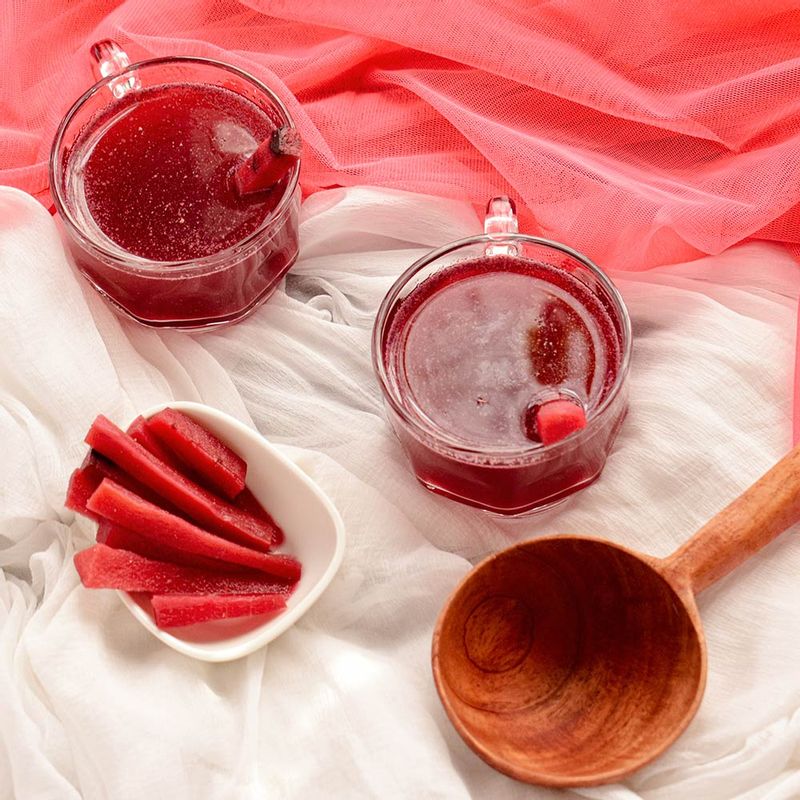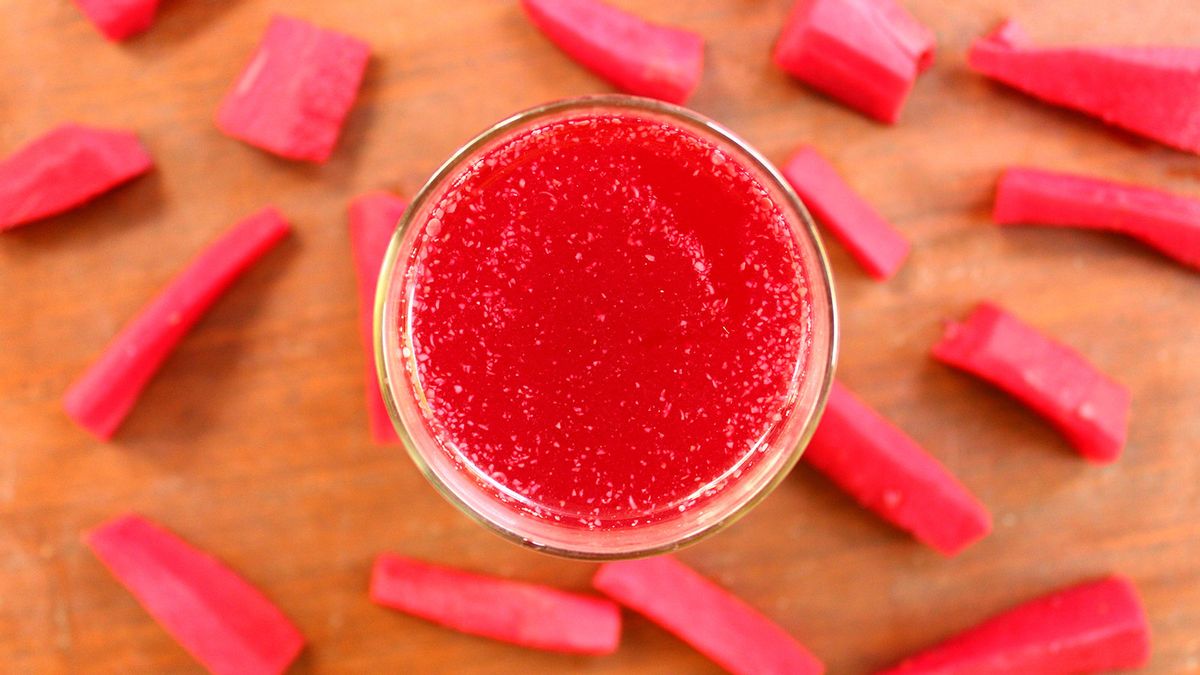When the bitter cold started its outward crawl from our bones in Delhi, my mother knew it was time. She would take out two ceramic bharnis, pale off white in colour with dull mustard collars and lids, from the storage.
We took a trip to the local sabjiwala, his pushcart wobbling under delicious winter produce – sweet green peas, crunchy red and white radishes, and bitter mustard greens. We would buy a shock of angry purple carrots. Coming home we would peel them gently, just deep enough to remove the fuzzy roots and dirt. Then we’d slice them into thickish batons, jardinière-style if you please. Steeping them in hot water, once it cooled, she added a little salt, Kashmiri chilli and a few tablespoons of ground mustard seeds. The jars would be put in the weak winter sun to bubble away.
What makes Kanji a winter delight
Under the watchful nose of my Pekingese, and the rather fresh Delhi air, lurking lactobacillus bacteria converted the sugar in the sweet carrots into lactic acid. According to Ayurveda, fermented foods are to be avoided during the summer and monsoons, when the digestive fire is at its lowest and should be consumed during spring and winter. In summer, consume them with caution. We drank drinks like Sattu, rather than Kanji, which like any other cultured food was heating or pitta-aggravating and, in excess, could cause inflammation.
The kanji was chockfull of probiotics that would digest even the heaviest ghee-laden laddus we were wont to scarf down that season. Each day she would give them a brisk swirl, peering down to assess the colour, and bite. After a couple of days, depending on the bounty of the sun god, my parents enjoyed it with our Sunday staple of spicy chola and pillow-like bhaturas, while I eyed it suspiciously and glugged down my fizzy carbonated drink instead.
Recreating Kanji in Mumbai
Years later, after moving to Mumbai, the sticky weather and unavailability of carrots, Kanji faded away from our winter brew, and instead, we popped in probiotic capsules while I tried to fall in love with kombucha and kefir unsuccessfully. Like our neighbours, our winter travel to and from Delhi entailed a suitcase stuffed with fresh vegetables, but it was always the green pea that won the battle of shrinking airline weight and space.
This time, I carried two carrots and we excitedly brewed Kanji which was ready in scarcely three days in the Mumbai sun. Admittedly, I fretted whether it was exactly the same as we had years ago. Perhaps it was the dispensation of bharnis years ago that played on my mind. Or the fear that the recipe, which perhaps evolved in the gap years, was missing a few key ingredients. Did we add beetroots? Only when we didn’t get the purple carrots, my mother said. I took a deep breath and took a sip. It was cold, tangy and refreshing – the drink of my ancestors who drank it in the cold winters in Amritsar and Lahore, under the dappled sunlight.
Kanji Recipe

Every home has its own unique kanji recipe.
Ingredients
- 2 medium kaali/purple, gently peeled and chopped as batons
- 1 litre of water
- Salt and Kashmiri red chilli powder as per taste
- 2 tablespoons crushed mustard seeds
Method
- Peel the carrot gently and chop as batons
- To 1 litre of boiling water add the carrots and steep for a few minutes then remove from the heat.
- Add the salt, Kashmiri chilli powder and crushed mustard seeds. Stir well and let it cool.
- Every morning, give it a whirl and keep it in the sun, and after sunset bring the jar back in.
- The kanji should be made in a few days, depending on the sunshine.


